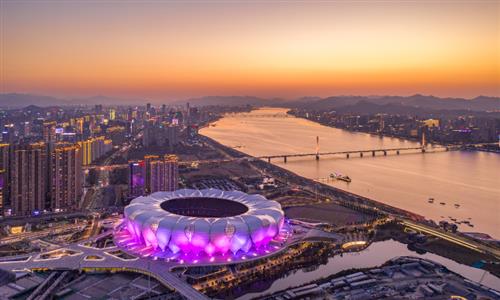
Illustration: Liu Xiangya/Global Times
Soccer, equestrian sports and management, and sports health and wellness are among the 24 newly approved majors that will be open for Chinese undergraduate admission in 2024, according to an update released by China's Ministry of Education on Tuesday.
A total of 30 colleges and universities across China will establish soccer as a major for youngsters who aspire to pursue their studies in the sport, which in China is currently mired in an anti-graft crackdown and is in need of an overhaul after decades of underachieving performances for the national team.
The new addition of the majors is in alignment with the requirements of the national strategy aimed at establishing China as a leading sports nation.
More importantly, the establishment of sports majors is designed to cultivate sports talents, meet social demands for qualified professionals, promote health and wellness with mass fitness programs and contribute to the development of the sports industry.
China is committed to building itself into a socialist modern sports powerhouse by 2035, according to the 14th Five-Year Plan for Sports Development issued by the General Administration of Sport (GAS) in 2021.
According to the plan, China wants to have 38.5 percent of its population participating regularly in physical activities by 2025. Central to the mission is to put "people" at the heart of every effort formulated in the overarching national strategy as a strong sports nation is fundamentally built upon mass sports participation.
Building a sports power is not only about improving competitive sports achievements but also about enhancing the level of mass sports participation. It involves establishing a solid public sports service system and improving the quality of these services to benefit the general population.
Elevating the level of mass sports participation could inspire a sense of accomplishment and satisfaction in sports activities, increase the involvement of grassroots sports enthusiasts, and continually expand the influence and appeal of sports activities at the grassroots level. In this way, activities can attract more children to participate, expanding the pool of talent for building a sports power.
Phenomenal grassroots events such as the Village Super League and Village Basketball Championships in Southwest China's Guizhou Province are exemplary events of the people's game.
One of the reasons for these sensational events drawing worldwide attention lies in their grassroots nature. Regardless of age or profession, local villagers participate in the events playing various roles such as cheerleaders and referees, and simply revel in the joy of sports.
The local events have also injected fresh impetus into rural revitalization and economic development efforts.
Mass sports events such as public square dancing, Tai Chi, Chinese chess, and badminton have been included in the multi-sports National Games in an effort to promote public participation.
Notably, the increasing vitality of mass fitness competitions at all levels highlight the growing demand for fitness facilities and venues accessible to the public.
In 2023, the number of sports fields nationwide increased by 365,900, with a growth rate of 8.7 percent over 2022. The per capita sports area increased to 2.89 square meters nationwide, achieving a 10 percent growth year-on-year, according to the national sports facility survey data released by GAS recently.
As the foundation for the promotion of national fitness, the growth in per capita sports area has shown the effectiveness of strategic policy support and progress in the expansion of new venues. However, the average 2.89 square meters per person still lags behind that of developed countries by a significant margin.
The availability of public sports facilities shows a noticeable disparity between urban and rural areas, with more facilities concentrated in urban areas, said Mi Jing, a professor with the Beijing Sport University.
Currently, the inventory of sports facilities in China is unbalanced.
The top three types of sports venues in terms of quantity in 2023 were basketball courts, public fitness paths, and table tennis venues, each exceeding 1 million, accounting for over 70 percent of the total number of sports venues, according to Mi.
In recent years, there has been a strong desire among people to participate in sports such as swimming, tennis, and winter sports, yet the number of facilities for these activities remains comparatively low, Mi noted.
The journey to continuously improve the accessibility of public sports services is still long. Building a sports power requires a people-centered approach, with the people as the mainstay in advancing the development of sports and ensuring that the achievements of sports development are shared by the people.
The author is a reporter with the Global Times. life@globaltimes.com.cn

